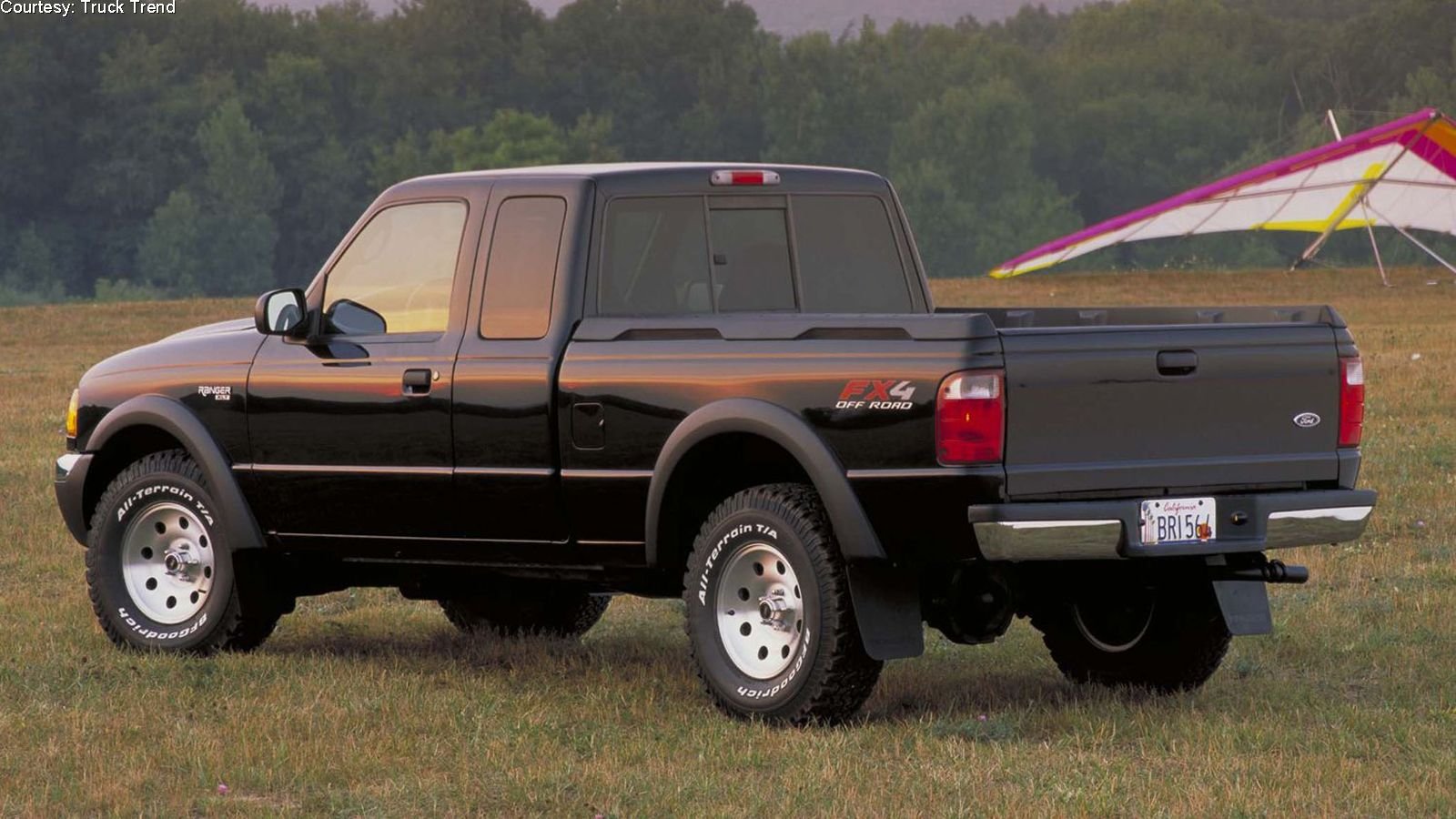The Case for 1998-2011 Ford Rangers
Daily Slideshow: With domestic trucks only getting larger and more costly what's a smaller midsize truck lover to do? They're not getting any younger, but Ford hit upon a winning formula with 1998-2011 Rangers.














Workhorse
By the time the turn of the millennium was approaching, the days of planned obsolescence were long gone. Manufacturers needed a vehicle line to catch on and stay caught on for as long as possible. The longer a model could go without changes, the easier it was for an automaker to recoup their investments in design, development, and tooling. Though the 2019 Ranger is a very different beast, U.S.-market Rangers from their inception through the demise of the third-gen evolved gently, and with that last generation-spanning 14 years, FoMoCo certainly got their money out of the little truck that could. A platform that lives multiple years is good for consumers as well—older models don't experience a sharp drop in resale value when a newer version comes out and parts costs can be kept low. The Ranger's compact size and economical base four-banger engine remained attractive to the truck buying public during its run, and as a used model they still make sense to many today.
Inflation
Smaller than they appear in pictures, which is a nice trick by the way, it seems strange to think of the Ranger as anything but a tiny pickup in today's world. The previous generation of Ford's small truck is indeed modest next to the 2019 "midsize" Ranger, but the Ranger line started out as a true midsize, above foreign and domestic mini trucks, yet below traditional full-size models like the F-150. By the time the third generation Ranger debuted in 1998, Ford gave the Ranger a minor facelift and moved to address the lack of space in standard-cab rangers by stretching regular cabs by three inches.
>>Join the conversation about 1998-2011 Ford Rangers right here in Ford-trucks.com.
K.I.S.S.
Buyers in search of endless combinations of cabs, doors, beds, and what have you, have always had the F-150 to step up to, but down in Rangerland things were kept a little more simple. Available as a regular cab with six- or seven-foot beds or as a SuperCab (which got you sideways folding rear seats) with a six-foot bed only, wheelbases extended from 111.5 inches on the short side to 125.9 on the longest.
>>Join the conversation about 1998-2011 Ford Rangers right here in Ford-trucks.com.
Pistons and Gears
To go with your choice of three body styles, Ranger initially offered three engine choices. In ascending order, the options were a standard 2.5-liter SOHC inline four-cylinder putting out 117 hp, a 3.0-liter pushrod V6 making 145 hp, and a 4.0-liter pushrod V6 cranking out 158hp. You're not winning drag races with any of these, though the 4.0-liter offered a usable 223 lb-ft of torque for buyers who wanted to tow something larger than a trailer full of brush. A five-speed manual transmission was available with all three engines, a four-speed auto could be coupled with the four and the smaller six, and a five-speed auto was an option for the larger six alone. Additionally, if you wanted your ranger with 4WD it had to have a V6 under the hood.
>>Join the conversation about 1998-2011 Ford Rangers right here in Ford-trucks.com.
2001 Update
With the 2001 model year came updated engine options. The SOHC four was replaced with a DOHC 2.3-liter inline-four rated at 135 horsepower, the 145 hp 3.0-liter pushrod V6 was held over, and a new 207 hp OHC 4.0-liter V6 superseded the old pushrod 4.0-liter V6. A new five-speed automatic was now an option, and the pushrod six was gone for 2009.
>>Join the conversation about 1998-2011 Ford Rangers right here in Ford-trucks.com.
All the Trimmings
Although powertrain changes were modest, Rangers were a little more generous when it came to trim levels and packages. A few notable choices were the FX4, a heavy-duty four-wheeler with large diameter wheels; the XL Trailhead, a "4x4 look" RWD-only model; and the Splash, which sported body-color fender flares.
>>Join the conversation about 1998-2011 Ford Rangers right here in Ford-trucks.com.
Dependability
Despite their strengths, Rangers were not immune to reliability issues. Four-wheel-drive system problems showed up on 1999, 2001, and 2003 Rangers; 2002 and 2004/2005 models experienced ball-joint headaches; and engine sensor issues were common in the 1999-2002 model years. Despite these problems, Rangers proved to be more reliable than Chevy's competitor, the S-10, although somewhat less reliable than Toyota Tacomas from those same years—but then again, what isn't? Until and unless Ford actually makes a pint-sized pick-up again, lovers of extra small Ford trucks will have to make do with used Rangers. Thankfully, there are still plenty of those in service.
>>Join the conversation about 1998-2011 Ford Rangers right here in Ford-trucks.com.
For help with your maintenance and repair projects, please visit our how-to section in the forum.
